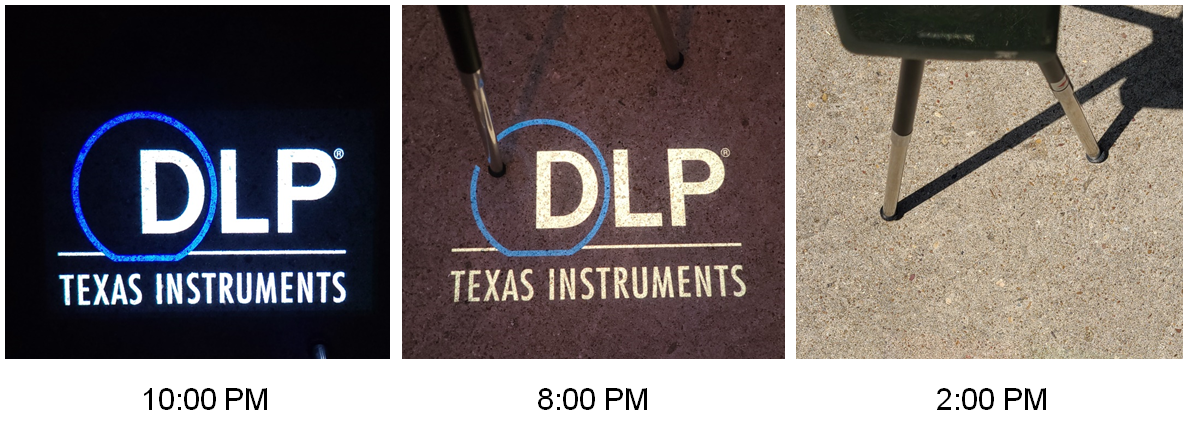DLPA116 October 2020 DLP2021-Q1 , DLP3021-Q1
2.2.1 Time of Day
The time of day will have a tremendous effect on visibility of the image. This is really just a change in the ambient brightness value in the equations above, so it will also affect projector brightness requirements. Viewing a DGP image (or any projected image) in full sun will require tremendous brightness from the projector. Brightness requirements this high, likely between 500 and 1000 lm, would increase cost, size, complexity, and thermal load of the projector, making it a challenge for low cost DGP applications.
While full sun viewing may not be feasible, small increases in brightness could allow for modest visibility of the image in dusk or twilight hours, rather than just full night time conditions. By modifying the ambient brightness variable in the above equations, projector brightness for evening operation can be estimated. The images in Figure 2-1 were taken in August in Dallas, Texas, and are representative of a high brightness time of year at different times of the day.
 Figure 2-1 Brightness at different times of day
Figure 2-1 Brightness at different times of day